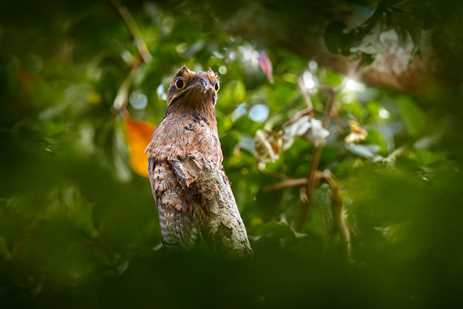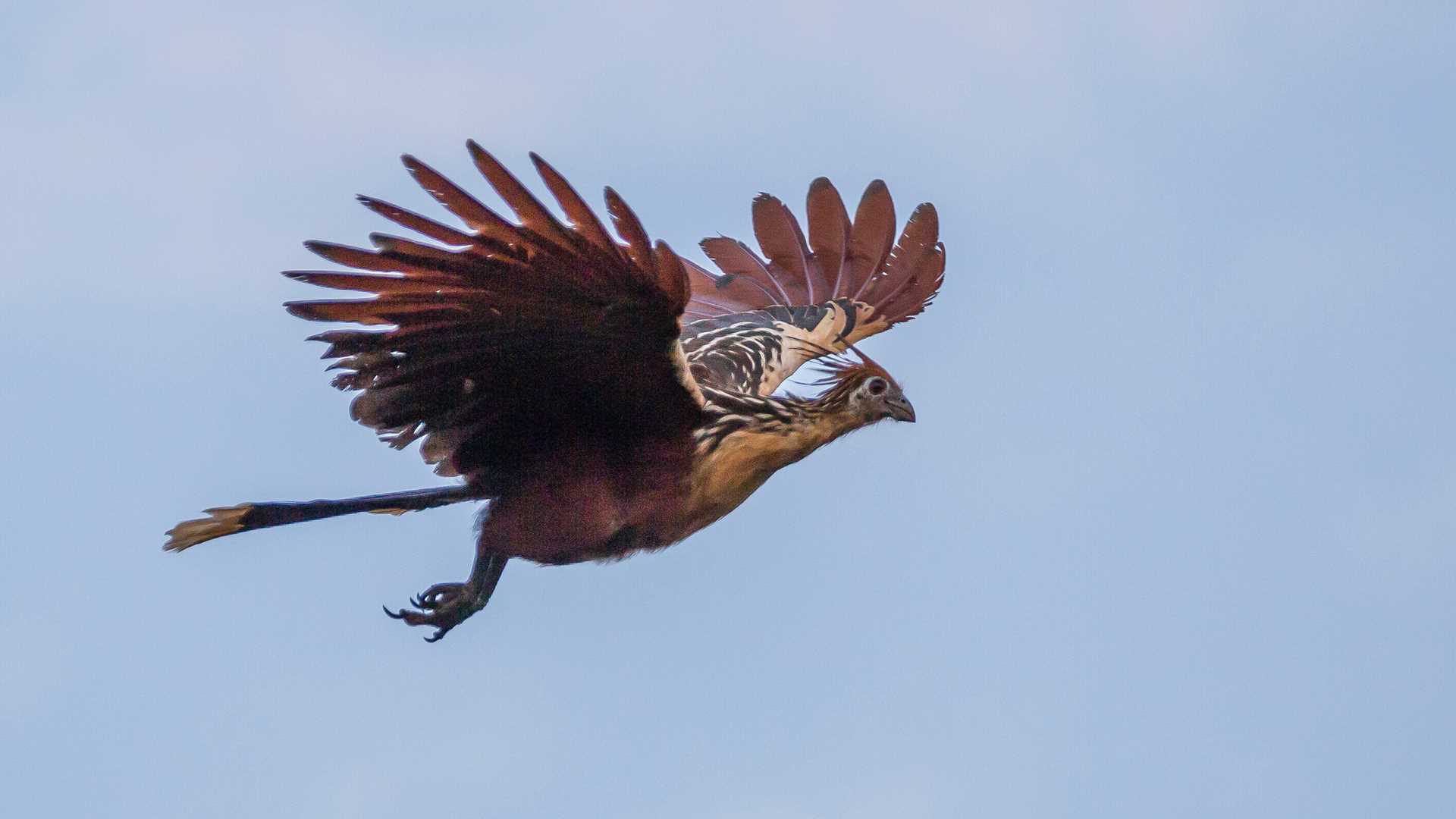If you’ve ever wondered why people get addicted to birdwatching, an expedition cruise along the Amazon River should quickly answer that question. Exploring the Pacaya Samiria Natural Reserve in the Upper Amazon has an uncanny way of inspiring travelers who’ve never gone birdwatching before to start scanning the trees and the sky for the most stunning and eccentric birds—a habit that’s hard to break once the trip is over. Countless varieties of mesmerizing birds thrive in the Pacaya Samiria's tropical rainforest climate. Here are a few to look out for on an adventure with National Geographic-Lindblad Expeditions. Get Inspired by Photos, Videos, Webinars, Stories, and Exclusive Offers. Sign Up
Hoatzin
Spotting a hoatzin is one of the most thrilling birdwatching experiences you can have in the Amazon. With its blue face, orange crest and red eyes, the hoatzin has a decidedly prehistoric look—and some ornithologists believe it’s related to the archaeopteryx, a dinosaur with bird-like features that dates back 150 million years. Another unique feature of these very unique birds: the babies are born with winged claws that allow them to crawl back up a tree after they’ve jumped into the water to avoid getting eaten. It also helps them to walk seemingly on all fours, like a dog, with those winged claws acting as two front legs.
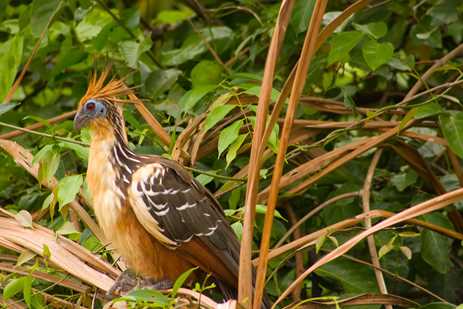
Jabiru Stork
Bend your neck back and look way up, to the highest tree tops in the Pacaya-Samiria Reserve, and you might catch a glimpse of a jabiru stork. One of the region’s largest storks—the biggest can tower over the average human—this bird dresses to impress, with its ebony head, snow-white body and bright red patch around its neck. Keep an eye out for groups of jabirus gathering at freshwater pools, trying to lure fish into their trap, but the best place to spot one is often in its nest: They build gigantic, durable homes that last for years—and can expand until they’re two meters in diameter or beyond.
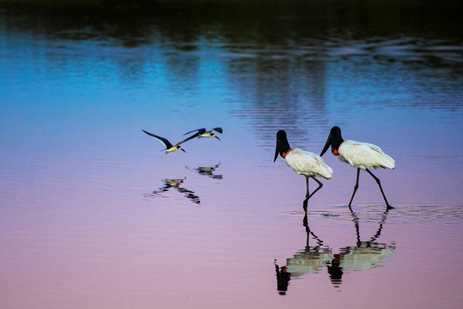
Laughing Falcon
The best way to begin searching for a laughing falcon is not with your eyes but with your ears, thanks to its eponymous laugh-like cry. This forest-loving bird, unmistakable with its black eye patches and fuzzy yellow-white plumage, hangs out in the trees to look out for its favorite meal: snakes lounging in the sun at the edge of the thicket. Although not members of the hawk family, they're also known as snake hawks, and can attack their slithery prey with enough force to sometimes decapitate them. You'll usually hear the call of a laughing falcon ringing out only in the morning and at sundown, but it can go on for an eternity—or, well, five whole minutes.
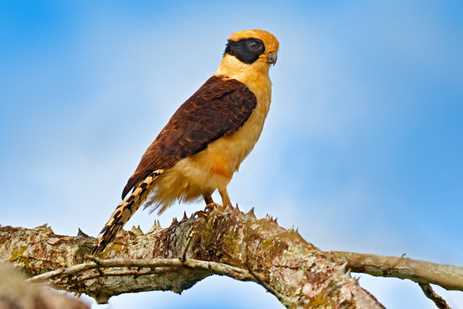
Great Egret
The great egret turns heads everywhere it goes. With a long and curvy neck, an elegantly pointy yellow bill, jet black legs and crisp white feathers from head to tail, this majestic bird always looks prepared to attend a very formal affair. Spotting a great egret during mating season is a special treat: That’s when the bird fans out the long white feathers (aka aigrettes) on its backside, creating a fireworks-like effect.
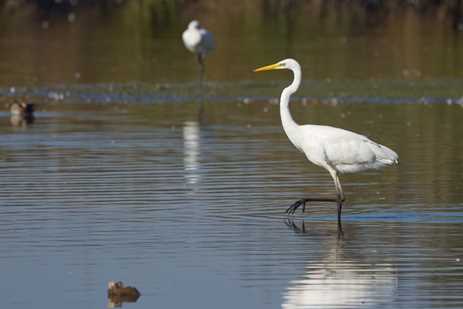
Blue and Yellow Macaw
As magnificently colorful as birds can get, blue-and-yellow macaws are always a jaw-dropping sight even for avid birders who’ve spotted them before. The macaw announces itself with a piercing scream, often before its orange belly, blue top and green head come into view. These birds mate for life, and during the breeding season the males command even more attention thanks to their gloriously bright plumage.
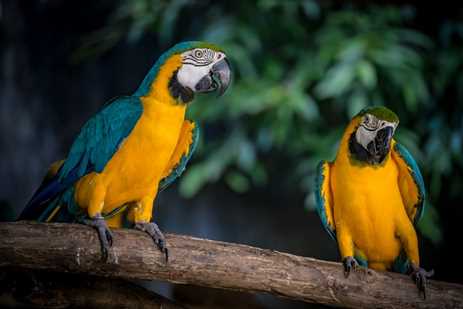
Spix’s Guan
If you hear a loud crashing noise in the forest and look up to spot what appears to be a turkey in a tree, chances are you’ve just seen a Spix’s guan. This big, fruit-loving creature bears an uncanny resemblance to the iconic Thanksgiving bird and it has a charmingly clumsy way of getting around, falling through one tree only to land on another. Its distinctive crimson neck stands out from its brown-plumed body, and makes it even easier to spot—if you’re fortunate enough to be in the right place at the right time.
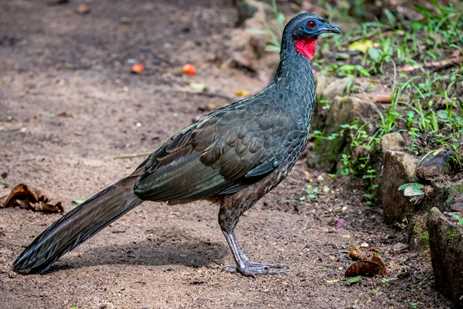
Potoo
The potoo presents an enticing challenge for birdwatchers: Not only is it nocturnal, but its superpower is its ability to sit completely still, allowing its bark-colored brown and white plumage to blend seamlessly into the tree branches. Potoos use their impressive camouflage skill to capture their prey of choice: flying insects (the bigger the better) and bats. You might have better luck hearing a potoo than seeing one, since its bird call sounds like a long, melancholy growl.
